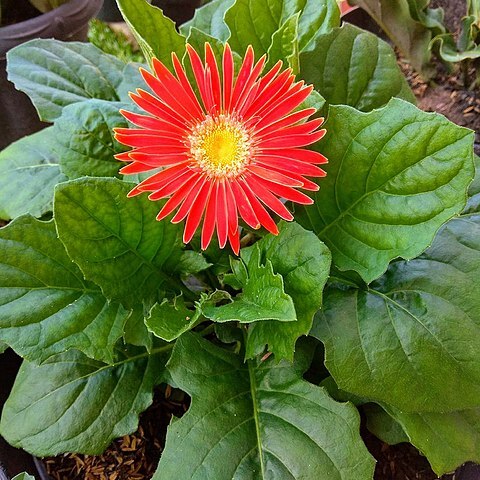Leaves radical, entire serrulate to dentate or sinuate-pinnatifid, sometimes villose to closely tomentose on the lower surface, usually glabrescent Scapes 1-several, ebracteate in the Flora Zambesiaca area, often appearing before or with the young leaves, sometimes elongating after seed-set, erect, densely villose-tomentose towards the apex, glabrescent in the lower part.
Capitula solitary, heterogamous, bilabiate-radiate; corollas all 2-lipped, the outer lip strap-shaped or shortly elliptic (2)3-denticulate, the inner lip of 2 small linear lobes.
Outer florets female the marginal ones radiate and the submarginal ones equally bilabiate, staminodes usually present (often absent in Gerbera piloselloides).
Style branches of hermaphrodite flowers shortly and broadly lanceolate, the tips rounded or subacute with short pollen-sweeping hairs outside.
Involucres broadly obconic; phyllaries numerous, imbricate, increasing in size to the inside, narrowly lanceolate or linear-triangular.
Scapigerous perennial herbs from woody rootstocks; rootcrowns lanate, roots numerous spreading thong-like or fusiform.
Achenes narrowly flask-shaped, ± attenuate above or prolonged into an apical beak, 4–10-ribbed, sparsely puberulous.
Anthers with narrowly ovate apical appendages, and sagittate bases with tails entire or ciliate.
Pappus several-seriate of minutely barbellate setae.
Inner florets hermaphrodite or functionally male.
Receptacle flat, shallowly alveolate.
Corollas white yellow pink or red.

